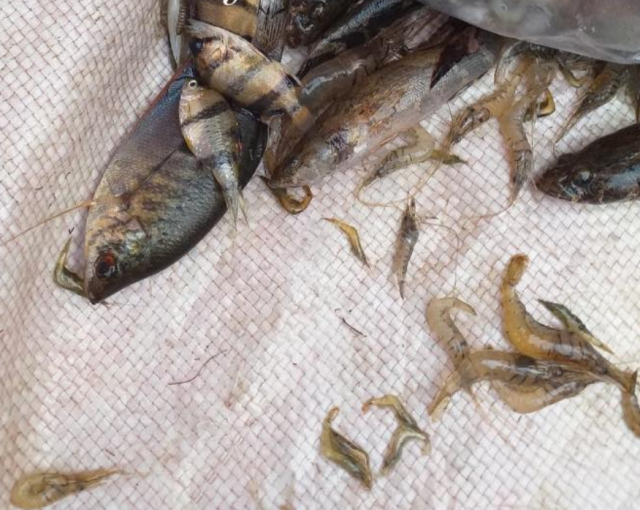I have long been feeding my dats primarily with ghost shrimp and secondarily with tilapia fry. I am aware that shrimp do have thiaminase, but my dats have always done well on them, and it is the only thing I can grow out really small dats with.
So I have often wondered whether dats - and many other predators - are not overly affected my thiaminase.
I have previously ordered NTT and other fish from the far east of Thailand, from the Mekong and some of it many tributaries. I often receive pictures of what is available.
But below is an unsorted picture of what was just caught. Bear in mind that this is the hot season, there has been virtually no rain for a few months, and rivers, streams and tributaries are low, slow flowing and hot.
Amongst other fish are NTT and lots of ghost shrimp.
I think shrimp are the natural prey of dats, and unlike many other fish, thiaminase is not really an issue.

So I have often wondered whether dats - and many other predators - are not overly affected my thiaminase.
I have previously ordered NTT and other fish from the far east of Thailand, from the Mekong and some of it many tributaries. I often receive pictures of what is available.
But below is an unsorted picture of what was just caught. Bear in mind that this is the hot season, there has been virtually no rain for a few months, and rivers, streams and tributaries are low, slow flowing and hot.
Amongst other fish are NTT and lots of ghost shrimp.
I think shrimp are the natural prey of dats, and unlike many other fish, thiaminase is not really an issue.




